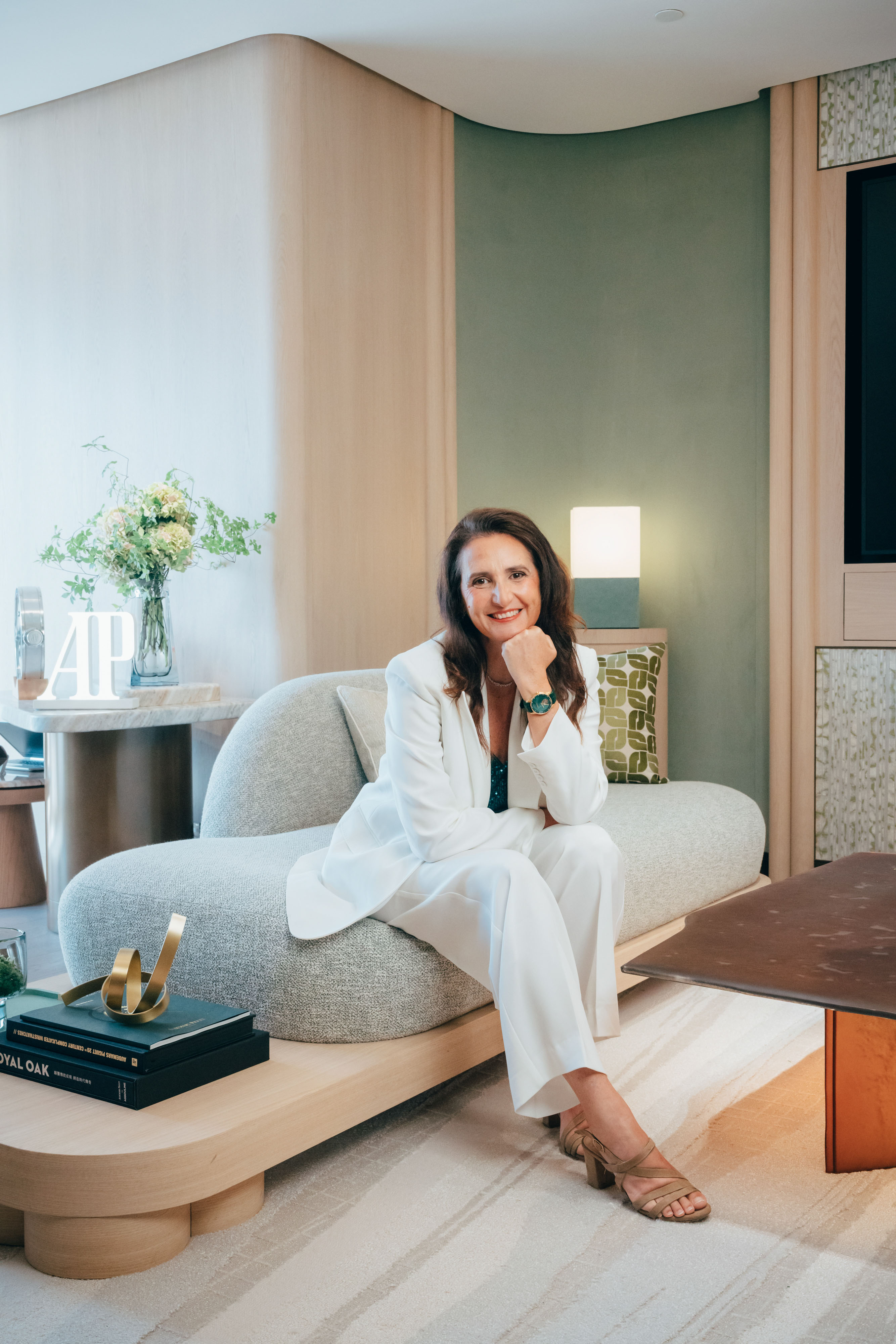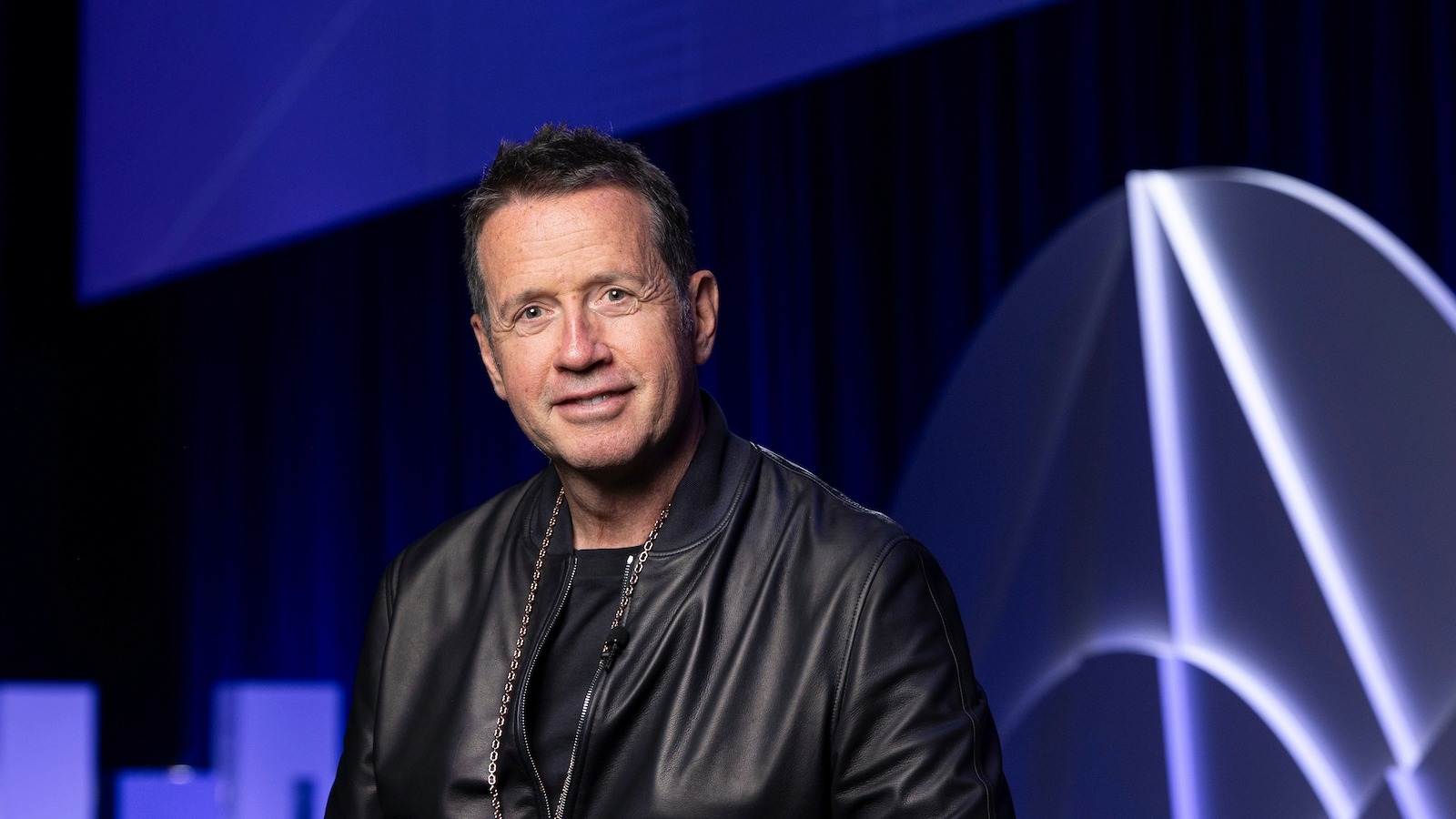Chloé CEO Geoffroy De La Bourdonnaye shares his vision for the brand, and the changes and challenges to come
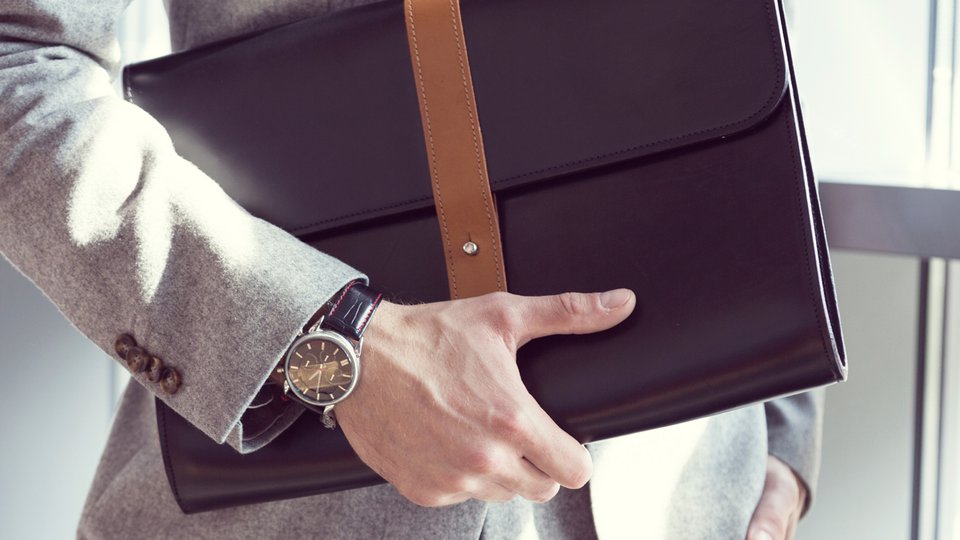
Chloé CEO Geoffroy De La Bourdonnaye shares his vision for the brand, and the changes and challenges to come
Chloé CEO Geoffroy De La Bourdonnaye shares his vision for the brand, and the changes and challenges to come.
Hailing from corporate behemoths such as Pepsico, Disney, and LVMH – as President of Christian Lacroix – there’s no question that Geoffroy De La Bourdonnaye is keeper of some enviable business acumen.
It’s this knowledge, combined with his keen instincts for what transforms a brand into a powerhouse, which proved instrumental to his successful revamp of iconic British house Liberty of London, where he held the top job from 2007 through to 2010.
Under his leadership, Liberty became profitable in 2010 for the first time in a decade, and despite spending just three years there as CEO he was duly credited with its “renaissance”.
If his impressive track history is to be taken into account, De La Bourdonnaye is clearly not a leader who sits on his laurels, and his strategic style is quick, precise and transformative.
True to form, once appointed as CEO of Richemont-owned, French fashion house Chloé in September 2010, following his departure from Liberty, De La Bourdonnaye was again swift to action – hiring Clare Waight-Keller as the new creative director at Chloé.
“ The power of Chloé is not within the Maison itself, so much as it is within the ‘Chloé girls’ around ”
De La Bourdonnaye has previously openly attested to the fact that Chloé has thrived since Waight-Keller’s arrival and the move has undoubtedly brought a fresh touch to Chloé’s brand DNA – something which De La Bourdonnaye is visibly passionate about.
“The power of Chloé is not within the maison itself, so much as it is within the ‘Chloé girls’ around”, he says, in a nod to the brand’s mantra: “Once a Chloé girl, always a Chloé girl.”
Almost five years on, De La Bourdonnaye has not lost his passion for the Paris-based brand and his sharp business sense continues to fuel Chloé to new heights.
The charming fashion house which started with just ready-to-wear collections, recently commemorated its 60th anniversary and has steadily evolved to incorporate fragrances, bags, shoes and, under De La Bourdonnaye’s hand, has also relaunched Chloé’s second line, See by Chloé.
While one can never truly predict what master stroke De La Bourdonnaye will deal next, here, he offers a break-down of how the brand has fared under his reign, the strengths and dangers of social media for luxury, and a teaser for what could come next.
“ Inevitably when you become a big player, growth tends to slow at some point ”
Speaking with the press in 2014, you confirmed that Chloé was experiencing unprecedented growth. How is the business faring thus far in 2015?
It’s had its moments. It’s a more interesting time now. The Chinese are becoming more discerning. Europe is back. Middle East is quite strong, and Japan is solid.
We hear much talk about growth slowing, after years of unheard-of prosperity, even as conglomerates such as LVMH announce full-year profits of €5.72 billion (FY2014). At what point will the industry accept these figures as a success? At what point can we expect growth to plateau?
I can’t speak on behalf of all the brands, but I can observe that inevitably when you become such a big player, in the case of LVMH, the growth tends to necessarily slow down at some point. However, it’s still quite a remarkable achievement to keep a brand like that growing.
As far as Chloé is concerned though, we are not as huge, but we are still very sizable, so the challenge, for us, is to continue to create and nurture the relationship with our clients. If you create exciting products, in clothing, bags, shoes and jewellery, for example; and if we keep nurturing the relationship with our clients, across the boutiques and e-commerce, I believe there is room for tremendous growth in the years ahead.
I don’t see any major slowdown coming up for us in general. Of course, we are more sensitive to the economy as a whole industry, but for brands like us which are still relatively still in a high-growth mode, I think there are a few years ahead for which we can remain rather confident.
However, we have to be careful because, in saying that, markets turn very quickly. The reason why they turn very quickly is not because the consumer has changed, but simply because their access to communication is much faster.
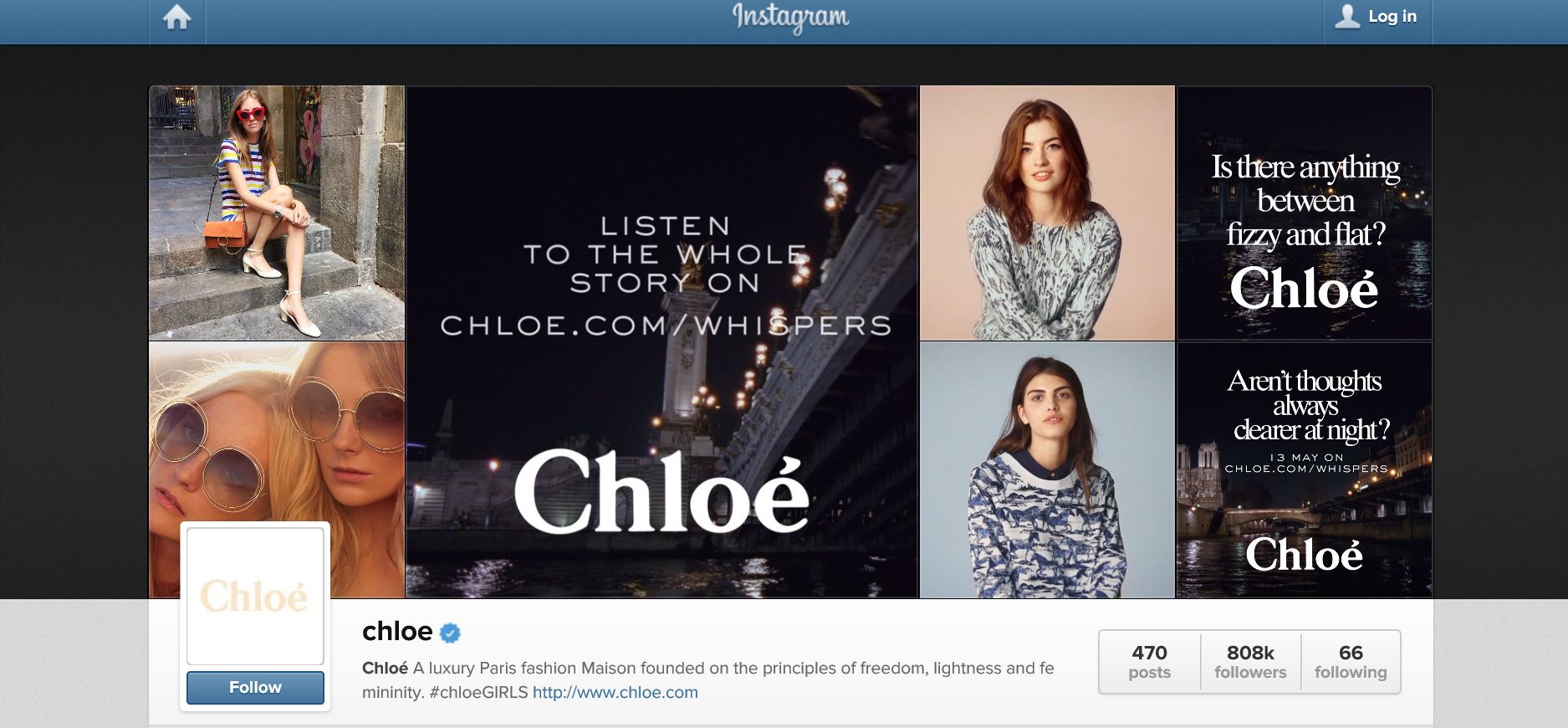
Chloé’s Instagram Account
Is social media a case in point? What is your view on how this medium impacts on luxury brands?
Social media is an example. As we know, this medium has a huge power in China, and if you look at the Chinese consumers, they follow it [social media] extremely carefully, closely. The Chinese are extremely educated, extremely smart. When they discover a brand or a product, they make sure that the community knows about it, and it grows very fast.
Perhaps this is because they basically discovered luxury at the same time that they discovered social media and digital – over the past 10-20 years – so for them, the two come together naturally. Whereas markets like Europe or the United States, have been growing more via traditional channels of communication, such as print, and therefore the power of social media is important, but not as important as in China.
For the Chinese, social media is synonymous with luxury, knowledge. Often, you see that brands which are very popular one year can become less popular in China very fast, because social media can change the popularity of those brands very fast.
So it’s a double-edged sword, because social media can really help you to grow very fast, but if you’re not careful, it can put you in a difficult spot. You need to compete. Once you’ve acquired new clients, you need to keep them and grow them, and listen to them.
“ Some people have the power to make one post, and influence thousands, sometimes millions of followers ”
Speaking of consumer habits, the luxury consumer in particular is becoming far more demanding in terms of customised products, marketing and experiences. Is this impacting your business?
Yes. There’s a strong ‘word-of-mouth’ in fashion. When a bag is recognized as beautiful or exciting, the news spreads very fast, precisely because of social media. Social media has given scale to word-of-mouth. In the past, we used to listen to our friends to discover the best item or the best brand, but it was limited to a small circle.
That circle has exploded with social media, because as you know, when you post, some people have the power to make one post, and influence thousands, hundreds of thousands, sometimes millions of followers.
That, to me, means that as a brand, at the maison, we need to consistently refocus on what we do best, which is to create and to relate. To create new items and relate with our consumers in an original way. Every time we stray too far from that core mission we are in danger, because the world is looking very closely and scrutinizing what we are doing, through all those social media channels. There are millions of eyes looking at us.
“ There’s no question that the power is shifting from institutions to individuals ”
Does that make it difficult to run a business in the digital age, when people are constantly publicly criticising brands?
There’s no question that the power is shifting from institutions to individuals. In a way, what’s happening in communication is what’s happening in democracy. Individuals have more power today than they have ever had before, and they can use the social media to amplify their power. If they are influential, they can really have an impact.
Does it make it more difficult? It depends. If you don’t create properly, if you don’t relate properly with your clients, you’re immediately under a spotlight. But equally, if you do a good job in your product, in your innovation or your relationship with your clients, it can accelerate business growth and make the cost of communicating lower.
Luxury has always been quite a closed club historically, but now it’s very open. Is there a point where the brand could potentially give away too much information and be viewed as less exclusive because of its digital communication activities?
I don’t think there’s any harm in sharing as much as we can about our maison. It just needs to be authentic; it just needs to be true to the collection that we create, true to the spirit of the maison. The problem comes when brands spend more time communicating about something, rather than doing it.
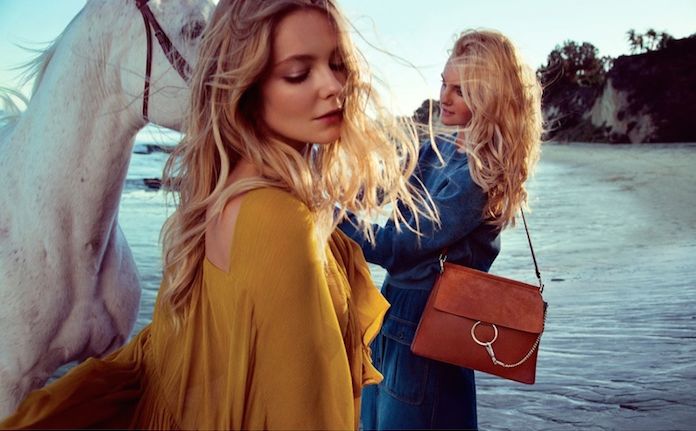
Chloé Spring/Summer 2015 Campaign
In terms of expansion then, is there a time where you think Chloé could move into horology or fine jewellery?
I think there could be a moment when Chloé could get into watches. I’m not sure the moment has arrived, because there is so much to do in our … what I call ‘the core’, which is clothes, bags, leather goods in general, and jewellery, specifically precious jewellery.
Shoes are also very important, there’s huge opportunity there too. So yes, this [expansion] is always on our radar, just not at the center of our radar right now.
How far do you believe that brands can push category expansion these days?
To me that’s a very interesting question, related to the power of social media and education. We’ve seen brands which have stretched themselves so far in so many different categories that they lose the essence of what they are.
I believe that consumers – because the majority are quite savvy – tend to allocate their money to brands which have a real, authentic legitimacy in the collections that they create. When a brand goes too far away from its core competencies, its savoir faire, it becomes more discriminated against than probably before.
“ When a brand goes too far from its core competencies, it becomes more discriminated against ”
Digital is clearly heavily influencing marketing at Chloé, what about distribution? Do you think it will become more and more important for brands to have their own e-commerce?
I think it’s a necessity. It’s inevitable that they’ll have their own e-commerce, if only to inform the clients better, as clients now tend to navigate between e-commerce and the boutiques. So it’s inevitable. We each have to find the nature of what we’ve been selling. Chloé was one of the first luxury brands to sell on Net-A-Porter, and it’s paid off quite superbly.
Net-A-Porter has kept a very luxurious approach to e-commerce, which we love. Because of this continued approach, they’ve probably attracted more of the finest e-shoppers in the world for fashion. The clients at Net-A-Porter, for us, are a very privileged clientele. We continue to work with them, and have a relationship with them.
“ Fashion loves change, but what makes the success in the long term is continuity of talent ”
Are digital communications playing an increasingly important role in your marketing mix these days?
Social media, definitely. We love that it gives consumers a voice, because of the fact that our clients, who we call the ‘Chloé girls’, are very connected and very modern. So social media plays a very important role, because they use social media a lot. And we like when they speak on our behalf, because we believe that the word-of-mouth is still the most trusted form of communication.
Social media, as I said before, amplifies this word-of-mouth and gives scale to word-of-mouth, so every time a ‘Chloé girl’ or a Chloé fan speaks up, be it on Instagram, or any other social media platform, the benefits are huge. Why? Because the trust factor [coming from them] is much higher than [from] the brand itself. That, to me, is the real power of social media. That’s why people are using TripAdvisor for their restaurants, Rotten Tomatoes for their movies, and so on and so forth.
One question regarding pricing, given that Chanel recently announced that it will try to globally harmonize pricing of some products. Is that something you think other brands will adopt?
Again, I think it’s going to be like an organic movement, where prices are always fluctuating, in our open markets, due to offer and demand. So they will stabilize wherever they can.
You cannot have the same price everywhere, purely because of transportation costs, differentials, and custom duties, which are still, in some countries, very important. In general, if you take out those factors, I think prices will tend to harmonize over the years.
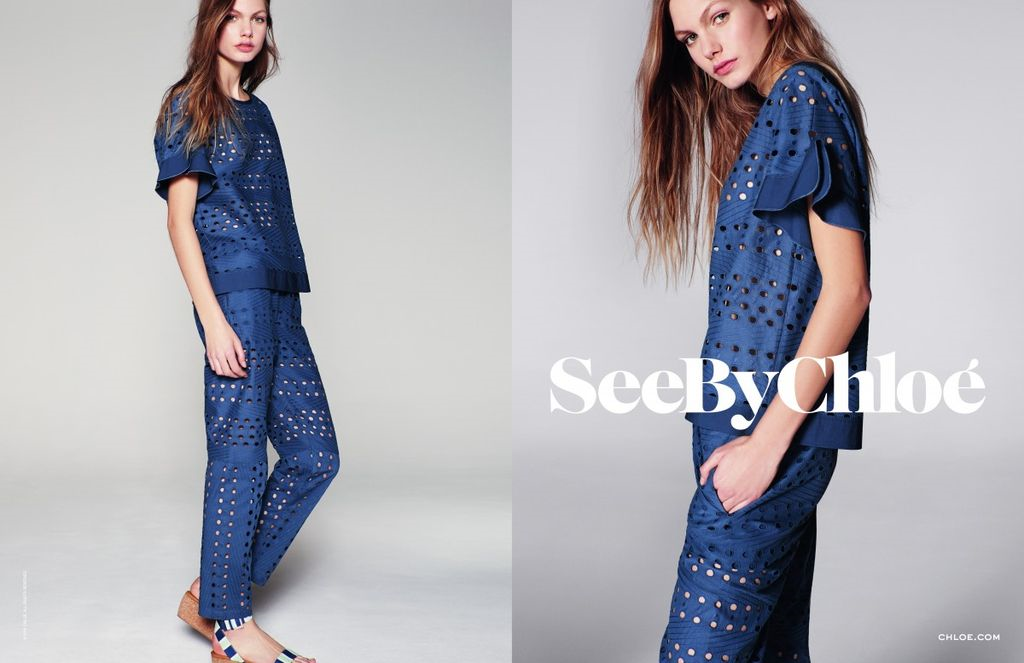
See By Chloé Spring/Summer 2015 Campaign
In your time to date at Chloé, what has been your biggest learning?
First, that the power of Chloé is not within the maison itself, so much as it is within the ‘Chloé girls’ around. The good will that the maison has, is because so many women in the world have this free-spirit attitude. They are very independent-minded, they love to create something in their own life and embody freedom; this femininity, this strength under grace, which brings magic into the lives of others.
It’s an incredible attitude, and all the Chloé girls around the world like to express themselves, but they don’t need to impress with a logo. So, in a way, the power of the brand was outside the maison, it was within the Chloé girls. Realizing that, listening to them, is helping us to create even more confidence for women who love to be magic, who love to impact on others.
“ You cannot have the same price everywhere, purely because of cost differentials, taxes, transport ”
What do you think is the biggest challenge the brand will face in the coming years?
Complacency is always the biggest challenge, and keeping a correct continuity. By that, I mean continuity between the talents. It’s difficult to attract the right talent, to keep them and to keep the creative energy always at the top. That’s the engine of any successful fashion maison, and it is always a challenge. Fashion loves change, but what makes the success in the long term is continuity of talent.
What is the next big opportunity that you would like to seize?
There are so many. Really, it’s true. If you look at the different categories, we’ve really tapped into the opportunities with expansion. We started really with ready-to-wear, now we have bags, shoes…Conventionally enough, we’re focusing on shoes, but also the See by Chloé line as well, which is a new opportunity. We want to focus on Chloé as a whole continuously, on the communication by Chloé – because that’s the essence of the maison.
In terms of geography, there is still a huge opportunity in the United States for us, also in China, and some in Europe. But there is not one single opportunity which is above every other one, really.
You mentioned e-commerce so, again, that is another opportunity, for us to have our own e-commerce. More generally though, I’d say engaging with the Chloé girls around the world, women who really like the spirit behind Chloé, its feminine, freedom, grace, modernity as well. Engaging with them and nurturing that successfully is probably the biggest opportunity in the end.
For more in our series of conversations with Luxury Leaders, please see our most recent editions as follows:
– In Conversation With Caroline Scheufele, Co-President, Chopard
– In Conversation With Aldo Magada, President & CEO, Zenith
– In Conversation With Fabienne Lupo, President, Fondation de la Haute Horlogerie
Additional editing by Daniela Aroche, Editorial Director of Luxury Society
This interview took place in Florence, on the occasion of Condé Nast International’s debut Luxury Conference








